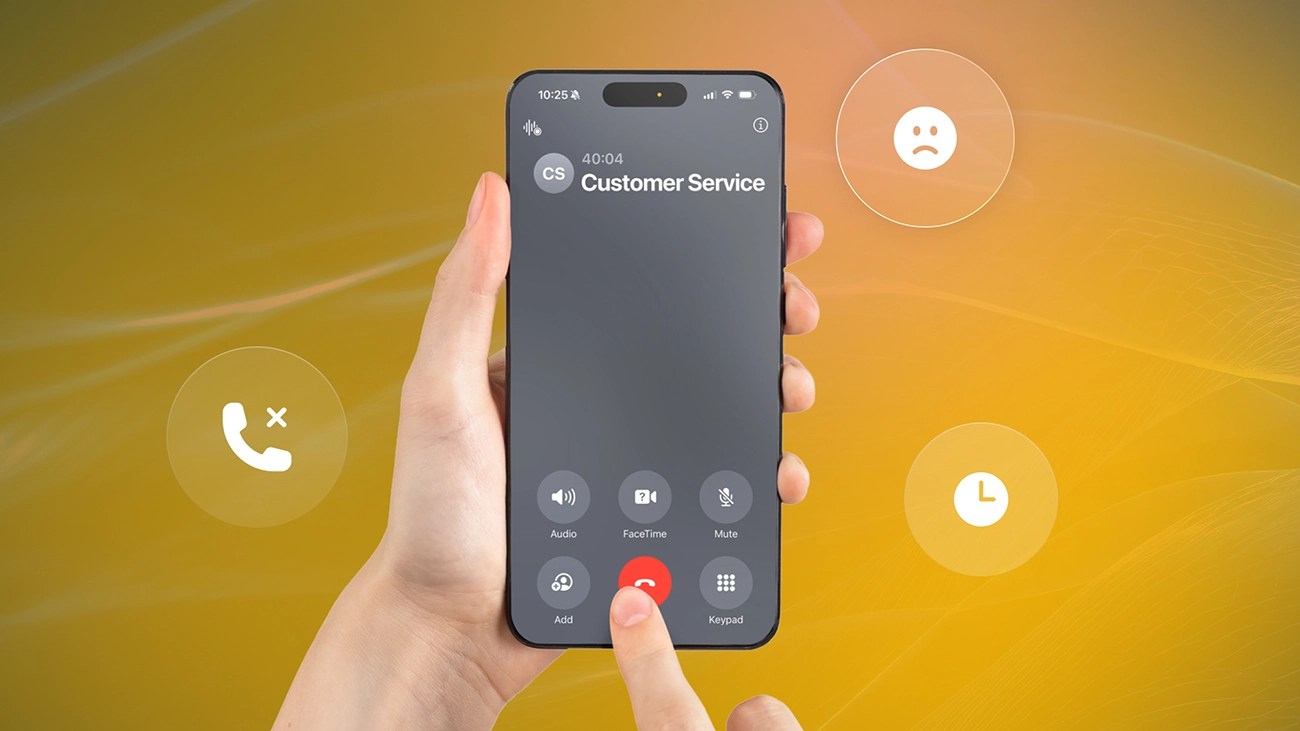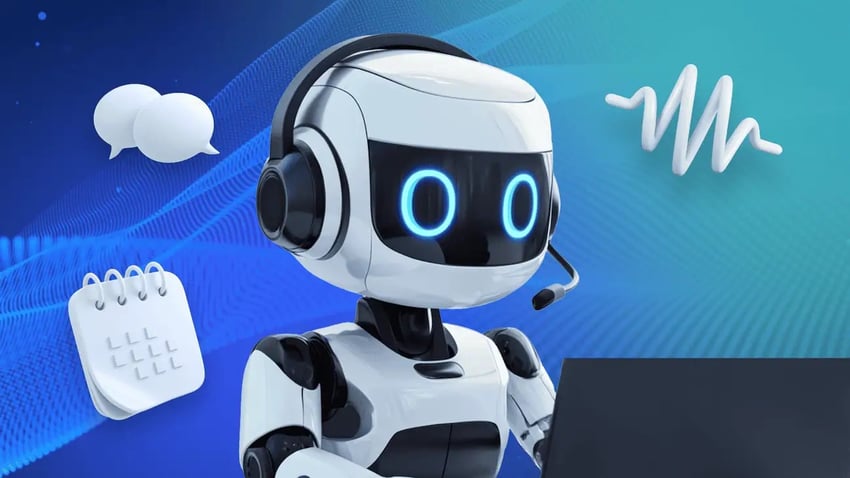Customers have little patience for waiting on hold. In an age of instant gratification, that familiar loop of repetitive music now signals frustration and the expectation of poor customer service.
For a better customer experience, faster communications are a must. Companies with long wait times risk not just customer churn but also public backlash through negative reviews and brand reputation damage.
Nextiva conducted a Customer Patience Benchmark survey of 400 people, which reveals where customer patience breaks and what solutions they prefer over a long hold queue.
Key takeaways
- A majority bail within eight minutes: 75% of respondents hang up after eight or more minutes on hold, and 54% leave within eight minutes.
- Callbacks win every time: 75% of customers either always prefer or at least want a scheduled callback instead of waiting on hold.
- “Speed Ladder” expectations span channels: Respondents expect chat replies within one minute, phone, SMS, or ticket responses within five minutes, and email responses within 30 minutes.
- When brands lag, customers move on: 56% immediately try another channel, and 28% abandon the product or service after a missed response window.
- Brands get only two chances: 75% of consumers make just two to three support attempts before giving up, and 42% will abandon a brand after two poor experiences.
Read on to discover how these customer expectations can help your business move from losing callers to building lasting loyalty.
Customer Patience: How Long Will Customers Really Wait? (New Data)
The primary concern for any contact center is identifying the exact moment a customer’s patience breaks. Waiting too long on hold creates a negative first impression that even the best agent can’t fix.
Our survey data provides a clear warning for businesses relying on traditional call center queues. While the full 12+ minute range ranked as the second most common choice for “maximum wait time,” that’s not where the biggest drop-off happens.
In fact, the data reveals that after only a few short minutes, the risk of call abandonment skyrockets. More than half (54%) of callers hang up after being on hold for only up to eight minutes. However, many drop off before that. The study also found that 6% of respondents only stick around for the first two minutes. A combined 31% would wait five minutes or less.

And that impatience isn’t limited to calls.
Consumers expect web chat replies in about 60 seconds, and even text messaging or ticketing answers within five minutes. Waiting any longer is seen as a failure.
Your business’s window of opportunity to connect with a customer is perilously short. If you are not proactively managing your average hold time, you are consistently losing over half of your inbound callers.
What Happens When Customers Don’t Wait
When customers face long hold times or a missed response window, they rarely just wait patiently. According to 77% of respondents, the urgency of their issue is the single biggest factor in how patient they’ll be. Instead of waiting, they immediately activate a backup plan — one that has direct, negative consequences for your customer service metrics, retention rates, and bottom line.

The first drawback of long wait times is channel hopping.
Our data show that 56% of customers immediately switch to another support channel when their first choice fails to meet their needs. While this might be an encouraging sign that multichannel communication can still salvage the interaction, it also means the customer has already experienced a failure in service, which erodes their patience and trust in your brand.
The permanent consequence, however, is brand abandonment. After a missed response window, 28% of customers simply walk away from the product or service entirely.
And companies get very few chances to make up for a poor experience:
- 75% of customers will only try contacting support two to three times before giving up.
- 42% will abandon a brand entirely after just two bad experiences.
This loss is a direct revenue leak. Each lost customer due to a long hold or an unresolved issue represents lost revenue and a declining reputation, as these customers often leave negative reviews or warn others.
Proven Methods to Keep Customers From Hanging Up
Reducing call abandonment and improving customer service patience comes down to three things: control, speed, and respect for their time. The data-driven solutions below are proven ways to transform a frustrating, draining experience into a positive and loyalty-building one.
1) Use callbacks over hold music
If there’s one clear mandate from our data, it is that customers overwhelmingly prefer a callback service over waiting on hold. An overwhelming majority (75%) of respondents say they’d rather schedule a guaranteed callback than wait on hold.
A callback system allows customers to choose an immediate callback as soon as an agent is free, or schedule a time that fits their day. This option eliminates the need for the customer to sit on the phone growing irritated by a full call center queue by the minute. It gives them back their time and turns a frustrating wait into a respectful experience where they’re in control.
Limiting that frustration can help customers be far more receptive to solutions when an agent connects with them.
2) Implement a multichannel approach
Even though more than one-quarter of customers will walk away after a missed first contact, the fact that 56% immediately switch to another support channel is an encouraging sign that multichannel communication helps with customer retention. Most customers still want to resolve their issue — even if it means switching channels to do it.
A comprehensive multichannel strategy helps your business:
- Meet customers where they prefer to talk. Some customers prefer the speed and informality of chat or text, while others require the detail and assurance of a phone call.
- Mitigate the risk of hang-ups. If your contact center management still results in long waits, an easy-to-find option for web chat, email, or a virtual hold/callback offers a pressure valve to keep the customer engaged and off the phone.
3) Train for speed and resolution
Wait times are frustrating enough, but the problem is getting worse.
A concerning 62% of respondents feel their customer service today is “somewhat” or “much” slower than a year ago. That points to a broader slowdown across businesses — one that rising customer expectations alone can’t overcome.
To fight this slowdown, focus your team training on maximizing first call resolution (FCR), a key call center metric measuring whether one call resolves a customer’s problem. By empowering agents with the knowledge and context they need to resolve issues quickly, you achieve two key outcomes:
- Shorter call times and fewer repeat calls
- Increased agent efficiency and lower average customer hold time for all other customers.
4) Leverage smart AI to prevent agent overload
Modern customer service often uses AI and chatbots to filter routine queries and reduce hold times. However, if the transition from a bot to a human agent is clumsy, it can destroy the customer’s remaining patience.
The challenge is that many businesses still struggle to implement these solutions at scale. In our State of Customer Experience report, we found that 98% of CX leaders recognize the need for seamless AI-to-human transitions, but a stunningly high 90% are struggling to implement seamless handoffs.
Nextiva’s AI receptionist software steps in to manage routine requests and intelligently route calls to an available and qualified agent. It helps reduce long customer hold times and improve agent efficiency.
When a human agent takes over, AI should instantly provide a complete summary of the conversation and the customer’s context, allowing for the agent to jump in fully informed. This way, customers don’t need to repeat themselves, which adds friction to the process and increases the chances of them hanging up.
5) Take a data-driven approach
To address your key call center problems, such as long hold times, you need first to understand the underlying causes. Commit to tracking customer service metrics to gain an accurate, data-driven approach to reducing abandonment.
Commit to regularly tracking, measuring, and reviewing key metrics with your staff:
- Average handle time: The time an agent takes to handle the average customer inquiry
- Call time: The length of the conversation with the agent
- First call resolution: The percentage of issues solved on the first contact
- Call abandonment rate: The number of callers who hang up before reaching an agent
Together with customer satisfaction (CSAT) surveys, these metrics provide the insight you need to make smart operational changes that reduce hold times and elevate every customer interaction.
Answer Calls Faster & Uphold Superior Service With Nextiva
A long customer hold time is a threat to customer loyalty and a drain on business revenue. By focusing on speed, control, and respect for your customer’s time, you can turn a major point of frustration into an opportunity to strengthen brand loyalty.
Nextiva’s top-rated business phone service and contact center platform helps you keep your customers off hold and focused on resolution. Intelligent routing, automated callbacks, and smooth AI-to-human transitions ensure that every interaction is fast, personalized, and efficient, allowing you to focus on growth —not hang-ups.


















 Customer Experience
Customer Experience 












